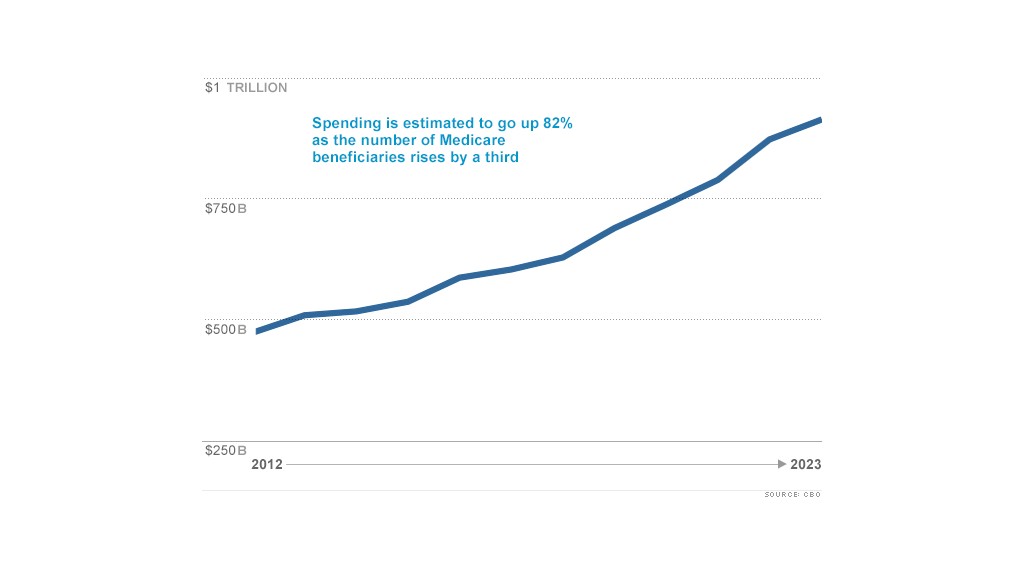
There's been surprising good news lately about health care spending -- its growth rate has been falling over the past three years and far more than anyone expected.
But the news isn't enough to trump Medicare's unsustainable path.
Growth in Medicare spending for hospital stays and physician care has dropped precipitously. It was growing at an average rate of 8.4% between 2002 and 2009. But since then the average dropped to just 2.9% a year, the Congressional Budget Office noted in its latest budget and economic outlook.
As a result, the CBO has lowered its cost estimates for Medicare in 2020 by about $126 billion, or 15%.
That's a nice chunk of change, but it won't do much to alter the fiscal imbalances that Medicare faces. The program is projected to eat up even larger pieces of the federal budget in the next decade and well beyond.
Medicare funding runs short by 2024, trustees say
The primary reason for that imbalance over the next few decades: the aging of the population. The number of Medicare beneficiaries who will be enrolled in the program will grow by 36%, or an estimated 18 million people, between 2012 and 2023. That rising trend is likely to continue, given that the number of Baby Boomers turning 65 is projected to grow from an average of about 7,600 per day in 2011 to more than 11,000 per day in 2029.
"The numbers of people who will be receiving the Medicare subsidies for their health care are growing so rapidly that costs will grow rapidly even if cost per person doesn't grow at all," CBO director Douglas Elmendorf said this week.

Over the next decade, annual net spending on Medicare will jump 80%, from $508 billion this year to $914 billion in 2023, according to CBO estimates. And it will also rise as a share of the economy from about 3% of GDP today to 5% by 2037.
At the same time, the number of workers whose payroll taxes help support Medicare beneficiaries is also declining. In 2011, there were 3.3 workers per beneficiary; by 2030 that number is likely to drop to 2.3; and by 2086, it will be 2.1, according to estimates from Medicare's trustees.


